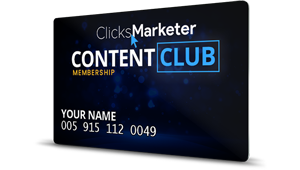Most businesses obsess over Google, but Bing Places? It’s got its own crowd. Millions still use Bing every month, and a sharp profile there can snag you extra local eyeballs and real customers. Optimizing your Bing Places listing means your info’s accurate, your business stands out, and you might even edge ahead of the competition.

Getting the most out of Bing Places takes more than just claiming your spot. Details matter—think good photos, up-to-date info, and actually engaging with customers. Every step, from verifying your business to nudging customers for reviews, helps build trust and boosts your local reach.
Ready to turn your Bing Places profile into a traffic magnet? Here’s how to set it up, make it shine, and keep it working for you long-term.
Claiming and Verifying Your Bing Places Profile

First up, you’ll need to prove you own your business. That means getting into your Microsoft account, finding your business listing (or making a new one), and jumping through a few verification hoops.
This whole process is about making sure only the real owner controls the listing, so customers see the right info.
Creating or Accessing a Microsoft Account
You can’t manage Bing Places without a Microsoft account—no way around it. If you’re already using Outlook, Office, or another Microsoft tool, you’re set: just log in with that.
No account? No problem. Head over to the Microsoft sign-up page, punch in your name, email, and a password, then confirm your email. Not exactly rocket science.
Pro tip: Use a business email, not your personal one. Makes sharing access with your team way less messy down the line.
If you’ve got several locations, one Microsoft account can manage them all. It’s a relief not juggling a dozen logins.
Searching for and Claiming Your Business
Once you’re in, search Bing Places to see if your business is already there. Bing pulls in a lot of public data, so don’t be surprised if you find yourself.
Just type in your business name, phone, or address. If you spot yourself, claim the listing and confirm you’re the owner. If not, you can create a new one from scratch.
Double-check every detail when claiming—old phone numbers, wrong addresses, weird categories? Fix them right away.
Got more than one location? Each spot needs its own listing. That way, locals can actually find the closest one.
Verification Methods and Best Practices
Before anything goes live, Bing wants you to verify. Usually, they’ll send you a postcard with a code, but sometimes you’ll get a call or an email instead.
The postcard’s the classic route—it shows up in about a week, and you just enter the code online.
Phone and email are faster, but Bing doesn’t always offer them. It depends on your business type and details.
To avoid headaches, make sure your address and contact info are spot-on before you request verification. Keep a utility bill or business license handy, just in case they ask for extra proof.
Optimizing Core Business Information for Maximum Visibility

The details you put in your Bing Places listing? They matter—a lot. Search engines use your info to match you with local searches, and even tiny mistakes can tank your ranking.
Ensuring NAP Consistency
Your Name, Address, and Phone number—aka NAP—should look exactly the same everywhere. Bing Places, Google, Facebook, Yelp, you name it.
Even little things, like “Street” vs “St.”, can trip up search engines and confuse customers.
Pick a format and stick with it. If you write “Suite 200” on Bing, don’t switch to “Ste 200” somewhere else. Consistency is king.
Do a quick audit every so often. Catching and fixing mismatches early keeps your local SEO healthy.
Selecting Accurate Business Categories
Categories help Bing figure out what you actually do. Choose your main category wisely—it’s what gets you found for the right searches.
You can add a couple of secondary categories, but don’t go nuts. Too many and you’ll just muddy the waters.
For example, if you’re a bakery, pick “Bakery” as your main. Maybe add “Coffee Shop” if that fits. Keep it relevant.
Getting this right really does boost your odds of showing up for the searches you want.
Crafting a Compelling Business Description
Your description is your elevator pitch. Keep it clear and straightforward—no need for fluffy marketing speak.
Highlight what you do best, your special services, and where you operate. A dentist might mention preventive care, cosmetic work, or emergency appointments.
Sprinkle in keywords naturally, but don’t cram them in. A solid, honest description helps both search engines and real people figure out why they should choose you.
Updating Business Hours and Contact Details
If your hours are wrong, you’re just asking for annoyed customers. Keep them updated, especially for holidays or special events.
Bing Places lets you tweak your hours whenever you need, and changes show up pretty fast.
List more than one way to get in touch—a phone number, email, maybe even a contact form. The easier you are to reach, the more likely people are to pick you.
Enhancing Your Bing Places Listing with Visual Content
Let’s be real: people judge with their eyes. Great photos and videos can make your listing pop and give customers a better feel for what you’re all about.
Uploading High-Quality Photos
First impressions count, and your photos are front and center. Crisp, well-lit shots of your storefront, inside spaces, products, or even your team make a big difference.
Blurry or outdated pics? Not a good look.
Aim for at least 720p resolution so images don’t look pixelated. Keep the framing consistent—exterior shots should clearly show your sign, and interior shots should look inviting.
Sort your images into groups like exterior, interior, products, or team so people can browse easily. Update your pics regularly, especially if you’ve made changes or added new stuff.
A fresh photo lineup tells customers you’re paying attention.
Adding Engaging Videos
Videos can really bring your business to life. Short and sweet is best—30 to 60 seconds usually does the trick.
Maybe do a quick tour, show off your best-selling product, or capture a happy customer’s testimonial. If you can keep someone’s attention for a minute, you’re winning.
Make sure your videos have good lighting, steady shots, and clear audio. Subtitles don’t hurt, since lots of folks scroll with the sound off.
Keep file sizes manageable—nobody likes waiting for a video to load. Test them on both desktop and mobile to be sure they work everywhere.
Optimizing Visual Content for Local Appeal
Want to really connect with locals? Show off your neighborhood. Snap a photo with a recognizable landmark in the background, or highlight something unique to your area.
Seasonal or community-focused images can make your listing feel more relatable. A restaurant could feature a dish made with local ingredients, for example.
Stick to a consistent style—colors, filters, and themes that fit your brand. When your visuals match your vibe and your location, people are more likely to trust you.
Leveraging Customer Reviews and Engagement Features
Reviews aren’t just nice to have—they’re a huge trust signal. Managing feedback and using Bing’s engagement tools can absolutely sway local customers and boost your visibility.
Encouraging and Responding to Customer Reviews
Recent, positive reviews help you climb the search ranks and reassure new customers. Don’t be shy about asking for them—just keep it above board.
Slip a reminder into your follow-up emails or receipts, or just ask in person. Skip the bribes, though. That’s against the rules.
Make it easy by sharing a direct link to your review page.
When people leave feedback, reply! Thank folks for kind words, and if someone’s unhappy, address it directly. Sometimes a thoughtful response can turn a bad review into a win.
Tips for responses:
- Always thank reviewers.
- Mention something specific from their review.
- If there’s a problem, offer a real solution.
- Stay polite, even if you’re frustrated.
Engaging with reviews shows you actually care—and both Bing and your customers notice.
Managing Customer Actions and Feedback
Bing Places lets you see what customers are doing—clicking for directions, calling, or visiting your website. This data is gold for figuring out what’s working.
If lots of people are looking up directions, maybe it’s time to run a local promo or prep for more walk-ins.
Pay attention to feedback about hours, products, or service. These comments can clue you in on what to fix.
How to stay on top of it:
- Check Bing Places insights regularly.
- Update your info if you notice trends.
- Adjust your services or promos based on what people are saying.
Staying active with reviews and feedback keeps your profile sharp and your customers happy.
Advanced Strategies for Sustained Online Presence
If you want to stay visible long-term, you’ve got to keep at it. That means tracking your performance, syncing Bing Places with your other marketing, and always keeping your info fresh.
Monitoring Performance and Analytics
Don’t just set it and forget it—dig into your stats. Bing Places shows you search impressions, clicks, and what actions people take.
Check these numbers every month or so to spot patterns. Compare them with your Google My Business data for a fuller picture.
Maybe Bing brings you more phone calls, while Google drives website visits. Knowing this lets you focus your efforts where they’ll pay off.
Try this simple routine:
- Monthly: Review Bing Places insights
- Quarterly: Compare with Google data
- Ongoing: Update categories, descriptions, or photos if trends change
Let the data guide your tweaks, not just hunches.
Integrating Bing Places with Your Marketing Strategy
Bing Places works best when it’s part of your bigger marketing game. Tie it in with SEO, ads, and social media for a stronger brand presence.
Running a seasonal promo? Update your Bing listing, push it on Google, and blast it on social, too. That way, customers see the same message everywhere.
Consistency builds trust. When your hours, contact info, and promos match across Bing, Google, and social, people are way more likely to engage.
No one likes mixed messages, and neither do search engines.
Keeping Your Listing Updated Over Time
An accurate listing says a lot—it tells customers and search engines they can count on you. Outdated hours or a wrong phone number? That’s a fast way to lose trust and maybe even tank your ranking.
Regular updates make sure your listing actually matches what’s going on at your business right now.
Key updates might look like:
- Holiday or seasonal hours
- New services or products
- Fresh photos of the location or team
It’s honestly a good idea to check your Bing Places profile every few months.
And hey, if you’re already poking around on Google My Business, might as well update both so things stay in sync.



